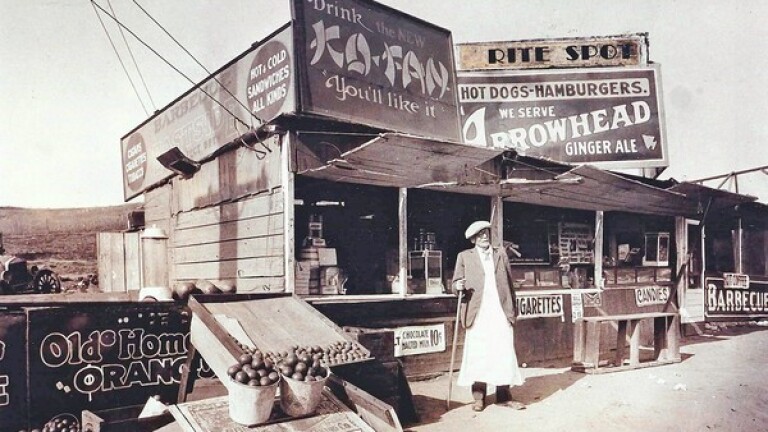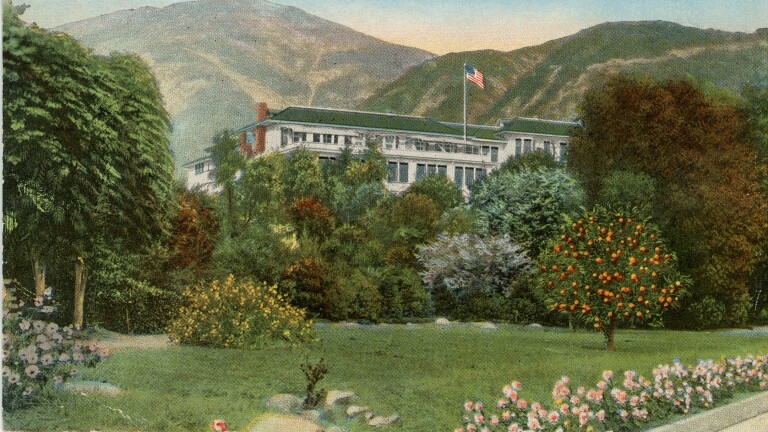Sycamore Terrace Tour
This area was formerly known as "Professor's Row" for the faculty from Occidental College that used to reside here in the early 1900s before the school moved to its current Eagle Rock location in 1914.

When the professors moved, the homes remained but some were sold to developers in the 1960s who razed them and built apartment complexes. The homes that evaded demolition are now protected by the Highland Park Overlay Zone. Sycamore Terrace offers a bevy of architectural delights for anyone interested in the influence of the Arts and Crafts Movement on homes in the Arroyo Seco. For more information on specific homes, see the Walking Directions below.
STARTING POINT
The intersection of Ave. 50 and Sycamore Terrace.
DIRECTIONS TO START
BIKE: Ride north on Figueroa St. Stop at the northern end of Sycamore Grove Park where Ave. 50 meets Sycamore Terrace.
TRANSIT: Take the 81 Bus towards 81 Figueroa - La Loma and get off at the Figueroa/Ave 49 stop.
CAR: From the 110 North, exit for Ave 43. Take a sharp left on Ave 43 and then turn right onto N. Figueroa Street. When you reach Sycamore Grove Park, there will be free parking on the right side of the street. Park on the north side of the park.
WALKING DIRECTIONS
Walk up Sycamore Terrace from Ave. 50 and look for the following historical structures:
- The Bent-Spaulding House, the oldest remaining house on Sycamore Terrace, was originally owned by civic leader Arthur S. Bent. Built in 1903 and located at 4925 Sycamore Terrace, this home features both Victorian and Craftsman detail that aptly shapes to fit the contours of the land. A large Bathchelder fireplace adorns the inside of the home. The Bent-Spaulding House has undergone several renovations, and is now Los Angeles Historic-Cultural Monument No. 482.
- The Baird-Rockellar House, located at 4935 Sycamore Terrace, was home to Martha Baird Allen as she was studying music at Occidental College. She would later marry John D. Rockefeller, Jr. The house is designed in the Queen Anne style, boasting a strong roofline with wrap-around shingles.The exposed rafters mark the beginning of the Craftsman style, as does the plain frieze separating the two floors. The non-fluted columns represent the simplicity of the design and the hallmark of Craftsman architecture.
- The Mary P. Field House, built in 1903 and located at 4967 Sycamore Terrace, is a fine example of a chalet style and barn-type Craftsman Bungalow. Saved from developers by financiers interested in preserving the home, the Heritage Trust succeeded in buying the home and declaring it Los Angeles Historic-Cultural Monument No. 327
- The Tustin House, erected in 1912 by Meyer & Holler of the Milwaukee Building Company, is located at 4973 Sycamore Terrace. A gem of the Craftsman style, this house was built for Mary Tustin, widow of the founder of the City of Tustin. Set to be replaced by a 20-unit apartment complex in 1986, the house was bought by preservationists and declared Los Angeles Historic-Cultural Monument No. 371.
- The Johnson House, located at 4985 Sycamore Terrace, was the first of three Craftsman houses that were designed by Meyer & Holler of the Milwaukee Building Company. It was commissioned by John Johnson as a wedding present for his newly married son and it remained in the family through the late 1980s. The interior is virtually unchanged, with the exception of a billiard room that was added in 1912.
SIGHTSEEING
Avenue 50 Studio
Operating for more than eight years and hosting more than 80 shows, this arts organization, grounded in Latino culture, features artists and poets whose work may not be represented in mainstream galleries.
131 North Avenue 50
Los Angeles, CA 90042
(323) 258-1435
NEARBY PARKS
Sycamore Grove Park<
Located at 4702 N. Figueroa Street in the Arroyo, this park offers barbecue pits, a children's play area, picnic tables, lit tennis courts, a bandshell, and concession stand. In the summer, the park is the site of a performing arts festival.
4702 N. Figueroa St.
Los Angeles, CA 90042
(323) 255-0370
Ernest E. Debs Regional Park
This mid-sized park at 4235 Monterey Road in the Arroyo has 100 picnic tables and 20 barbecue pits.
4235 Monterey Road
Los Angeles, California 90032
(213) 847-3989
DINING
Chico's Mexican Restaurant
Chico's colorful exterior is hard to miss, and people rave about the tacos, burritos, enchiladas, and more.
100 North Avenue 50
Los Angeles, CA 90042
(323) 254-2445
Fidel's Pizza
An established neighborhood pizzeria since 1977, Fidel's offers thick crusted pizzas with delectable tangy sauce, sandwiches on toasted Italian Rolls, and pasta.
307 North Avenue 50
Los Angeles, CA 90042
(323) 256-1996"?


